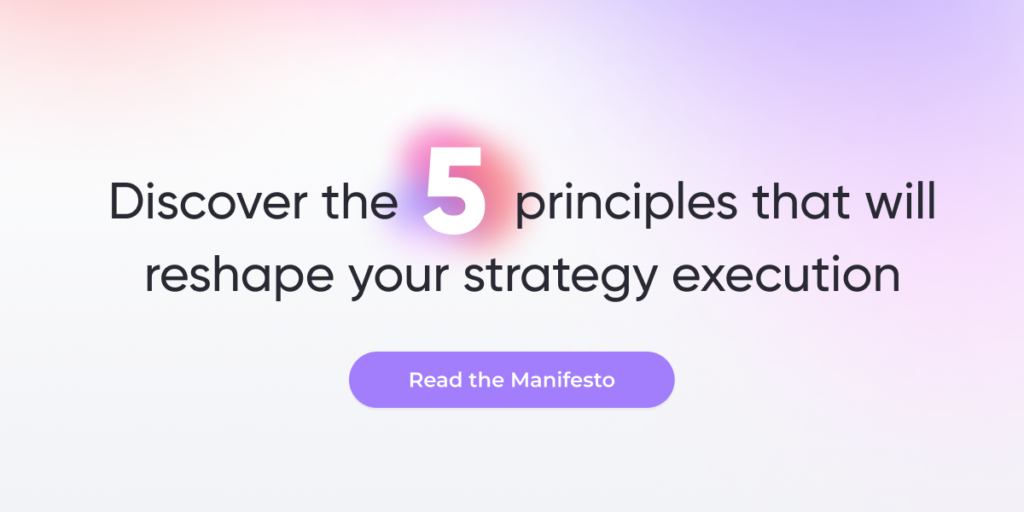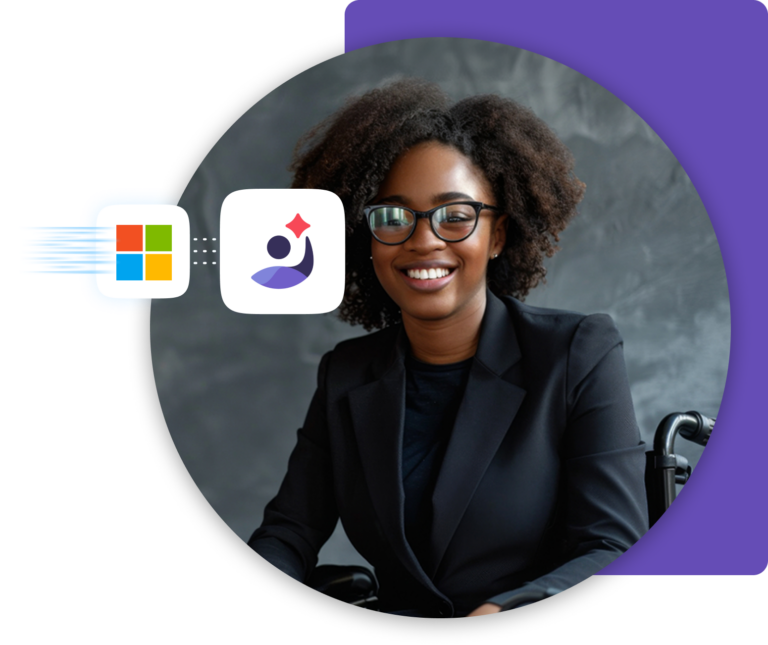If you’re thinking more about your digital workplace lately, you’re not alone. It’s showing up in budget meetings, leadership conversations, and maybe even your own to-do list. And for good reason; IDC projects that companies will spend more than $80 billion on digital workplace technologies by 2026, a clear reflection of how digital transformation continues to reshape the workplace. That number keeps going up as expectations around productivity, communication, and employee experience keep evolving.
Here’s the thing: the digital workplace isn’t just an IT project management or HR initiative anymore. It’s a shared responsibility, and one that touches every part of your organization, from frontline teams to executive leadership. The tools you choose and the way you use them have a direct impact on how people connect, stay informed, and get work done.
In this post, we’ll break down what a successful digital workplace actually looks like in 2025, why the digital workplace is important to long-term business success, and how to build a strategy that works for your business…without overcomplicating things or overwhelming your teams.
Key takeaways:
- The digital workplace is now essential. It’s a strategic priority that impacts every team, not just IT or HR.
- It’s more than just tools. A true digital workplace connects systems to support real workflows.
- Integration beats tool overload. Orchestrated platforms reduce silos and improve communication.
- Design around employees. Build solutions based on how people actually work and what they need.
- Have a clear, measurable strategy. Define goals, responsibilities, and success metrics from the start.
- Security must scale with growth. Protect data and ensure compliance as your digital workplace expands.
What is a digital workplace, really?

Let’s be honest: “digital workplace” is one of those terms that gets thrown around a lot without much clarity. But at its core, it’s simple. Your digital workplace is the virtual version of your physical office space; it’s where work actually happens.
The digital workplace is the “virtual, digital equivalent of the physical workplace.” — Paul Miller
That includes all the digital tools your employees use to do their jobs: messaging apps, project management software, HR systems, virtual meeting tools, enterprise social media tools, internal communication platforms, even the intranet. Whether your team is sitting at a desk, checking a mobile device on a shop floor, or flying between cities, these tools make up your digital work environment.
And it’s not just for corporate offices. The digital workplace is just as essential for hybrid workers, remote teams, and frontline employees. It’s what keeps people connected across locations, roles, and devices and makes sure no one’s left out of the loop.
But here’s the catch: just having tools doesn’t mean you have a strategy. Over time, many organizations end up with a patchwork of disconnected platforms that don’t really talk to each other. And that makes it harder for people to stay informed, aligned, and productive.
A true digital workplace model isn’t just a collection of apps. It’s a thoughtfully connected system that enables employees to work better, wherever they are, on whatever device they’re using. A well-designed digital workplace enables smoother workflows by aligning with actual business processes and employee needs, not just licenses and logins.
Of course, not every organization is there yet. Some are still juggling too many disconnected tools. That’s where things can start to break down, and where strategy makes all the difference.
Why is the digital workplace so important?
You’re probably already investing in digital tools, and maybe even juggling more platforms than you’d like. But digital tools alone don’t make a digital workplace work. What really matters is how everything fits together to support your people, your business processes, and the way your teams actually work.
How the digital workplace enables cross-team alignment
A strong digital workplace enables alignment across teams, tools, and communication. When things work well, it’s easier for employees to stay informed, get their work done, and feel connected, whether they’re in an office, on a job site, or working remotely.
So why is the digital workplace such a priority now?
1. Expectations are higher—on both sides
Your employees want tools that feel intuitive. That work across devices. That keep up with modern digital work environment demands. And if the systems you’re using don’t match the way they live and work, you’ll feel the friction in productivity, in satisfaction, and in retention.
And without the right digital transformation strategy behind it, even the best tools can miss the mark.
2. Work is distributed, and that’s not changing
Remote and hybrid work have moved from experiment to standard practice. According to McKinsey, 58% of Americans now have the option to work from home at least one day a week, and 35% can work remotely full-time. That means your digital workplace needs to work for hybrid workers, frontline teams, and employees in a physical office alike.
If it doesn’t support seamless communication, knowledge sharing, and access to digital records—on any device, from any location—it’s not keeping up.
Learn more: Understanding the hybrid workforce
3. Communication is fragmented—and people feel it
Most organizations use a mix of email, chat, intranet, apps, and internal newsletters to reach employees. That’s a lot to keep track of. And without a clear orchestration strategy, important messages fall through the cracks.
That’s exactly why workforce orchestration matters. It’s about delivering the right message to the right people at the right time, whether you’re rolling out benefits info, launching a new initiative, or managing a crisis.
4. Engagement drives performance—and vice versa
This isn’t just about tools. It’s about outcomes. Gallup’s 2023 report shows that organizations with high employee engagement are 18% more productive and 23% more profitable than their peers. According to Gallup’s 2024 “State of the Global Workplace” report, business units with highly engaged employees outperform their peers with 23% greater profitability and 17% to 18% higher productivity.
When your digital workplace is set up to actually support employees, through thoughtful communication, personalization, and easy access to what matters, engagement goes up. And so does performance.

How do you know if your digital workplace is actually working?
You’ve invested in the tools. You’ve rolled out the strategy. But how do you know if it’s doing what you hoped?
The best way to tell if your digital workplace is working isn’t by counting logins or checking whether people downloaded another app. It’s about what those tools enable: smoother workflows, better communication, and a workforce that’s actually engaged.
Signs your digital workplace is on the right track:
- Mundane tasks are disappearing. Repetitive work is either automated or dramatically reduced thanks to smart digital tools and, in some cases, technologies like robotic process automation.
- Productivity is up. Employees are spending less time switching between tools and more time getting meaningful work done.
- People feel connected. Whether they’re remote, on-site, or hybrid workers, employees stay informed and aligned, and you can see it reflected in stronger employee engagement across the board.
- Knowledge sharing is easier. Employees can quickly find what they need, no matter the device or location.
- Employee satisfaction is improving. You’re seeing better retention, stronger feedback in employee surveys, and fewer gaps in communication.
- Recruiting gets easier. A modern, digital workplace helps attract top talent, especially when your tools support work-life balance and flexibility.
- Your tech actually talks to each other. Digital workplace platforms are integrated across systems, reducing silos and increasing efficiency.
- Security is built in. Your tools are keeping up with modern data security requirements, reducing the risk of employee data breaches worldwide.
If you’re not seeing those outcomes yet, it doesn’t mean your strategy is broken, but it may be time to reevaluate how all the digital workplace components are working together.
Spending on digital workplace solutions
Wondering whether your peers are also investing in their digital workplace? Yep, they absolutely are.
Researchers forecast that the global digital workplace market will grow by over $709 billion between 2025 and 2029, fueled by increasing demand for seamless digital workplace experiences, better employee communication, and stronger support for hybrid work.
That kind of growth isn’t about shiny tools or trend-chasing. It’s about solving real problems: scattered communication, fragmented tech stacks, employee resistance, and the challenge of replacing what used to happen organically in a physical office space.
According to Forrester’s 2024 report on digital workplace services, organizations are doubling down on their investment in digital workplace strategies. The goal isn’t just to modernize systems. It’s to improve the experience, bring AI into day-to-day operations, automate repetitive tasks, and reduce unnecessary costs. It’s a clear sign that the digital workplace has shifted from a tech initiative to a business essential, and a path to long-term cost savings.
That means organizations are rethinking how they implement digital workplace platforms, what digital workplace tools belong in their stack, and how to align them with real business processes. It’s not about spending more. It’s about spending smarter, because the right digital workplace enables better collaboration, stronger employee engagement, and efficiency.
Hyper-personalized comms for every employee
Digital workplace best practices
Building a digital workplace isn’t just about rolling out new tools. It’s about designing a strategy that makes sense for how your people actually work and what your business needs to get done.
Here are five best practices to keep your rollout focused, employee-centered, and set up for long-term success.
Best practice #1: Start with what your employees actually need
A lot of digital workplace challenges come from designing around platforms instead of people. Before investing in new tools or reworking internal processes, get a clear understanding of what your workforce needs to succeed in their day-to-day operations, and encourage employee feedback early and often to guide those decisions.
Digital workplace success starts with people
To figure out what your workforce really needs, start by asking the right questions. You’re not just taking inventory; you’re trying to understand how people actually use (or avoid) your tech stack and where the friction is showing up.
Ask things like:
- Are employees spending more time managing tools than doing meaningful work?
- Are digital distractions making it harder to focus?
- Are our digital workplace tools siloed or disconnected?
- Do they support the way people actually work, or do they create roadblocks?
- Do we have the right mix of communication and collaboration tools to support different roles, departments, and regions?
Hybrid workers might need mobile-first tools. Frontline teams might need asynchronous communication options. And every employee wants fewer logins and more clarity. When you treat digital transformation as a people-first initiative, and not just a technology rollout, you’re more likely to land on solutions that actually work.

Best practice #2: Align your vision
Getting feedback from employees is step one. Step two is making sure your strategy doesn’t stop in a silo.
Bring in the people who will make this work. That includes leaders from IT, HR, internal communications, and line-of-business teams. When everyone understands how the digital workplace supports both employee productivity and the business, you’ll spend less time defending the plan and more time making progress.
The business case for digital transformation
Your digital workplace isn’t just a set of tools; it’s a system that connects employee journeys across touchpoints: onboarding, training, benefits, change communications, and everything in between. That alignment is key to any meaningful digital transformation, where tools and processes actually support how employees work, rather than getting in the way.
Internal communication plays a critical role here. If you want to get buy-in, you need to explain the why behind the change, not just the what. That transparency builds trust. And trust leads to adoption.
Best practice #3: Audit your tech stack—and be honest about what’s working
If your digital workplace feels cluttered, you’re not imagining it. Most organizations have too many disconnected systems that overlap, underperform, or make basic tasks harder than they should be.
That’s why one of the most important steps in any digital workplace rollout is auditing what you already have. Look at every platform, app, and tool through a clear lens: Is this helping employees, or slowing them down?
- Are digital workplace tools creating efficiency or just more tabs to manage?
- Where are employees hitting friction, especially in communication and collaboration?
- Are we creating a seamless experience across departments and devices?
- What’s driving user productivity, and what’s creating noise?
- Are we doing enough to support secure digital workplace practices, especially around accessing confidential data?
Why less really is more
Your goal is to simplify, not stack. The right audit will help you identify where your digital workplace components are supporting employee satisfaction and internal communication, and where they’re working against it.
This isn’t just about cutting costs (though that’s part of it). It’s about creating a more intentional, focused work environment where digital tools support, not complicate, your employees’ day-to-day experience.
Learn more: 8 key components to a successful communication strategy
Best practice #4: Prioritize integration over piling on features
More tools doesn’t mean more progress. In fact, when systems aren’t integrated, every new app becomes just another place employees have to check, update, and troubleshoot. The result? Lost time, missed messages, and a fragmented employee experience.
That’s why smart integration is non-negotiable. A seamless digital workplace experience depends on how well your systems work together—HR platforms, comms tools, collaboration apps, access control, employee data—all of it.
When your digital workplace tools are orchestrated instead of siloed, you reduce friction, facilitate communication, and support user productivity without the noise. It’s not about having the flashiest features. It’s about building a digital environment that actually works for your teams.
From disconnected tools to connected experiences
This is where many digital workplace strategies fail: they add tools instead of connecting the ones that already exist. But the organizations that get this right are the ones delivering real cost savings, better alignment, and measurable improvements to employee engagement.
Best practice #5: Build a roadmap your teams can actually follow
You don’t need a hundred-page strategy deck. What you do need is a clear, realistic plan that helps your organization move forward without overwhelming everyone involved.
A roadmap built for real teams
A strong digital workplace rollout happens in stages. It sets expectations early, shows teams what’s coming next, and keeps things flexible enough to adjust as you learn. Without that structure, even the best tools can cause confusion and pushback.
Your digital workplace roadmap should answer a few key questions:
- What are we rolling out first, and why?
- Who’s responsible for each step?
- How are we keeping employees informed along the way?
- And what does success actually look like?
That last one matters. If you’re not measuring outcomes like employee engagement, productivity, or adoption, it’s hard to know if your strategy is really working, or just making noise.
Clear communication, regular checkpoints, and visible wins can make all the difference. It’s not just about launching new tools. It’s about helping people understand what’s changing and why it matters to their day-to-day experience.
Building a smarter digital workplace
When your roadmap is easy to follow and tied to real results, your teams are more likely to stay on board. And that’s how transformation actually sticks.
Digital workplace trends to watch in 2025
The digital workplace continues to evolve, driven by technological advancements and changing workforce expectations. Here are the key trends shaping the digital work environment in 2025:
1. AI integration and governance
Artificial Intelligence (AI) is becoming integral to digital workplace operations. However, organizations must implement robust governance frameworks to manage AI’s ethical use, data privacy, and compliance. Gartner emphasizes the need for clear guidelines to maintain integrity and fairness in AI applications.
2. Employee experience as a strategic priority
Enhancing the digital employee experience is crucial for productivity and satisfaction. Deloitte’s 2025 Global Human Capital Trends report highlights the importance of balancing technological advancements with human-centric approaches to improve employee productivity and engagement.
3. Workforce orchestration and employee journeys
Companies are adopting workforce orchestration strategies to align digital tools with employee workflows. This approach ensures that communication, collaboration, and task management tools support workers throughout their employee journey, from onboarding to daily operations.
4. Hybrid work models and flexibility
Hybrid work models continue to be the norm, with organizations balancing remote and in-office work. Flexibility is key to attracting and retaining talent, as employees seek work environments that accommodate their needs and preferences.
5. Security and compliance in the digital workplace
As digital workplaces expand, ensuring security and compliance is paramount. Organizations are investing in robust security measures to protect sensitive information and maintain trust in digital operations.
These trends underscore the importance of a holistic approach to digital workplace strategy, one that treats digital transformation as a long-term investment in employee experience and organizational outcomes.
It’s exciting for Firstup to be a part of the growth of this market. We’ll continue our work helping our customers meet their technology needs, improve the employee experience, and measure workforce engagement and alignment.
What success looks like: Real examples from the field

Strategies don’t just live in a slide deck. It shows up in how your people work, communicate, and connect every day. Here’s how six organizations are using Firstup to simplify complexity, reach every employee, and improve the employee experience.
Swissport
Operating in one of the most operationally complex industries in the world, Swissport unified its global digital workplace by consolidating multiple systems into a single, streamlined platform. Employees across regions now access key tools and updates from one place, improving usability, reducing noise, and creating consistency across their digital space.
“What Firstup does is unify and give an ability across those different layers to hide some of the technologies to the end users so that, to them, it’s an app that’s straightforward and very easy to use.”
— Dave Lynch, Chief Information Officer at Swissport
Grainger
Grainger moved from traditional communication channels to a mobile-first, intelligent digital workplace. By shifting to personalized, targeted messaging across devices, they dramatically increased engagement, especially among their dispersed, deskless workforce.
“We definitely see that Firstup users are more engaged.”
— Brodie Bertrand, Vice President of Communications and Public Affairs at Grainger
JetBlue
JetBlue launched “On The Fly,” a custom-branded intelligent communication platform powered by Firstup, to connect its 25,000 crew members, whether in-flight or on the ground. This digital workplace platform enables targeted and hyper-personalized communications, ensuring that team members receive relevant information tailored to their role and location.
“It’s a great feeling to make them feel connected, to let them know what they do at JetBlue matters, and that they’re a part of something much bigger than themselves.”
— Lynn Andriani, Manager of Internal Content at JetBlue
Wegmans
Wegmans built “The Dish,” a modern communications platform that keeps store teams informed and connected. During times of crisis, it helped the company move quickly with critical updates. Day-to-day, it gives employees a space to share updates, celebrate wins, and stay aligned with company goals.
“The two-way communication that The Dish enabled really made a meaningful difference for our employees at that time.”
— Peggy Riley, Vice President of Employee Communications and Engagement at Wegmans
Conclusion: It’s time to rethink your digital workplace
You’ve seen it firsthand: outdated tools, scattered systems, and communication that doesn’t quite land. But a strong digital workplace strategy can change that. It can simplify the way people work, improve internal communication, and give every employee, from the frontline to the back office, a clearer, more connected experience.
The real payoff? It’s not just in productivity or cost savings (though you’ll see those too). It’s in building a digital workplace that works for everyone. One that values work-life balance, supports secure digital workflows, and adapts to whatever comes next.
That doesn’t happen by accident. It takes a strategy rooted in people, not just platforms.
If you’re building toward a better digital employee experience, here are a few resources to help:
- Building a future-ready workforce: How poor communication slows upskilling and wellbeing goals
- Leading HR Industry Analyst Josh Bersin Highlights the Need for Intelligent Communication Platforms
- Crafting a business case for employee experience
And if you’re ready to put strategy into action? Schedule a demo to see how Firstup helps teams build a smarter, more connected digital workplace, without adding more complexity.
You don’t have to settle for “good enough.” Let’s build something better.
Deliver a hyper-personalized employee experience at scale
Download PDF








